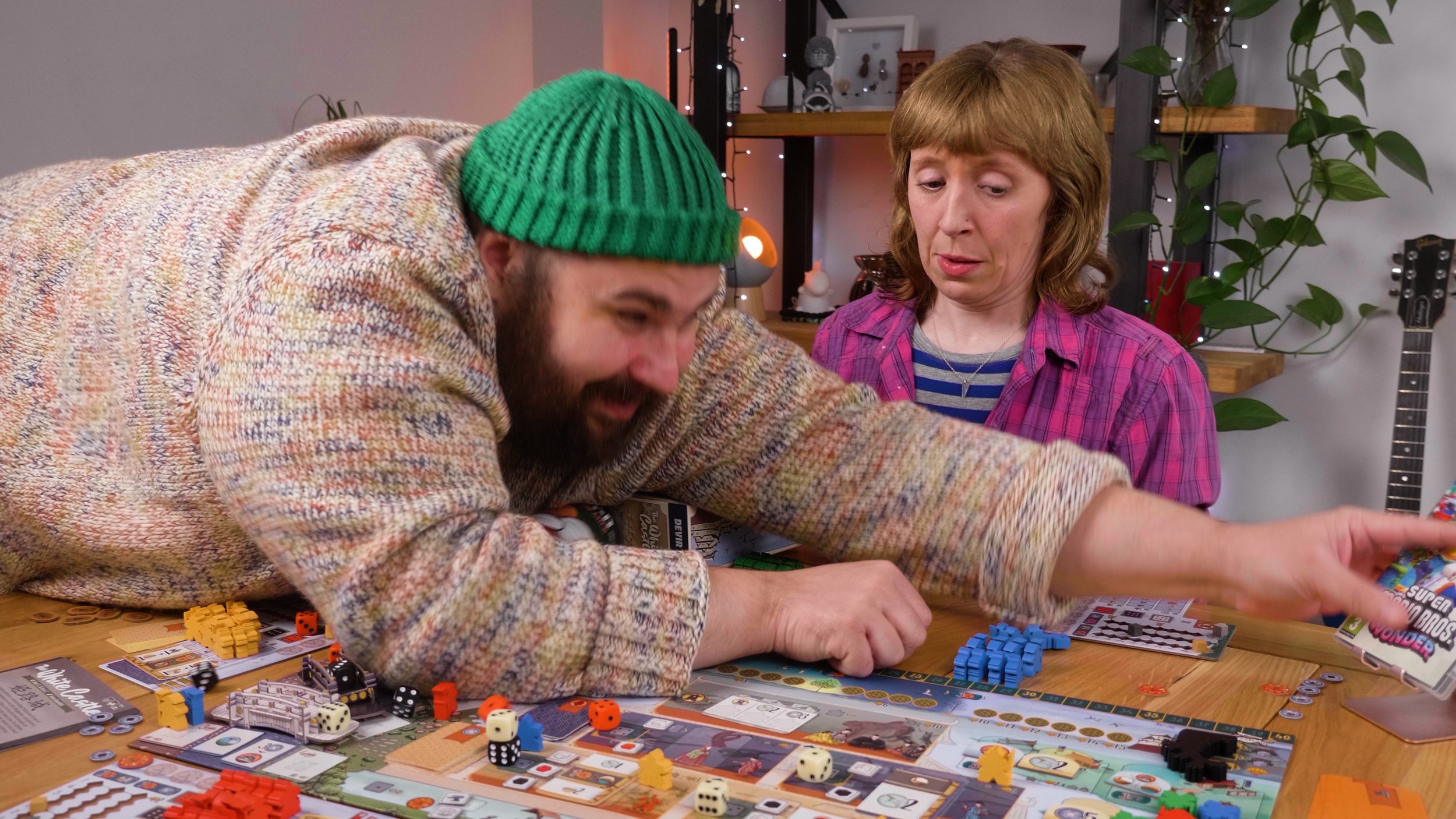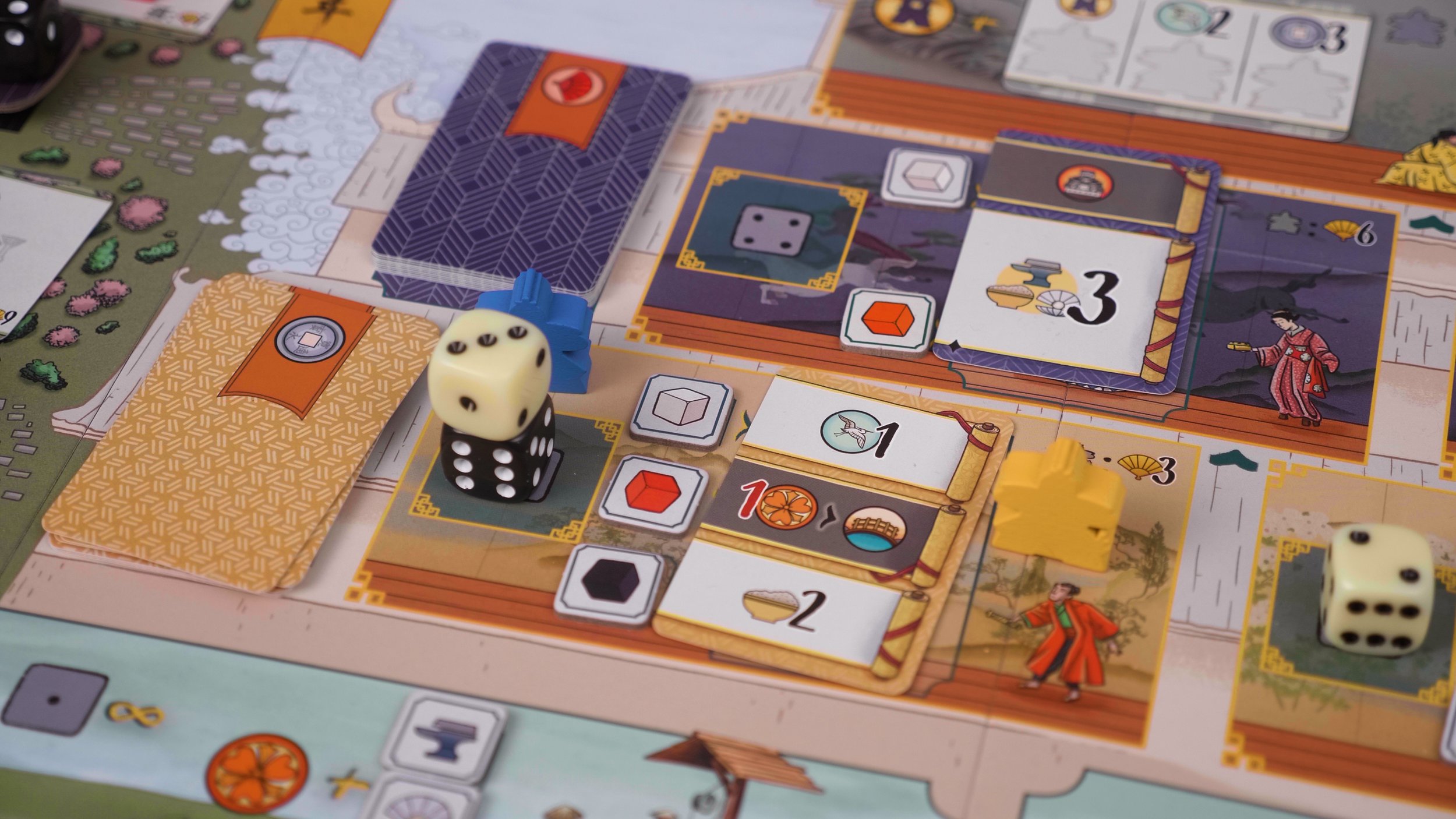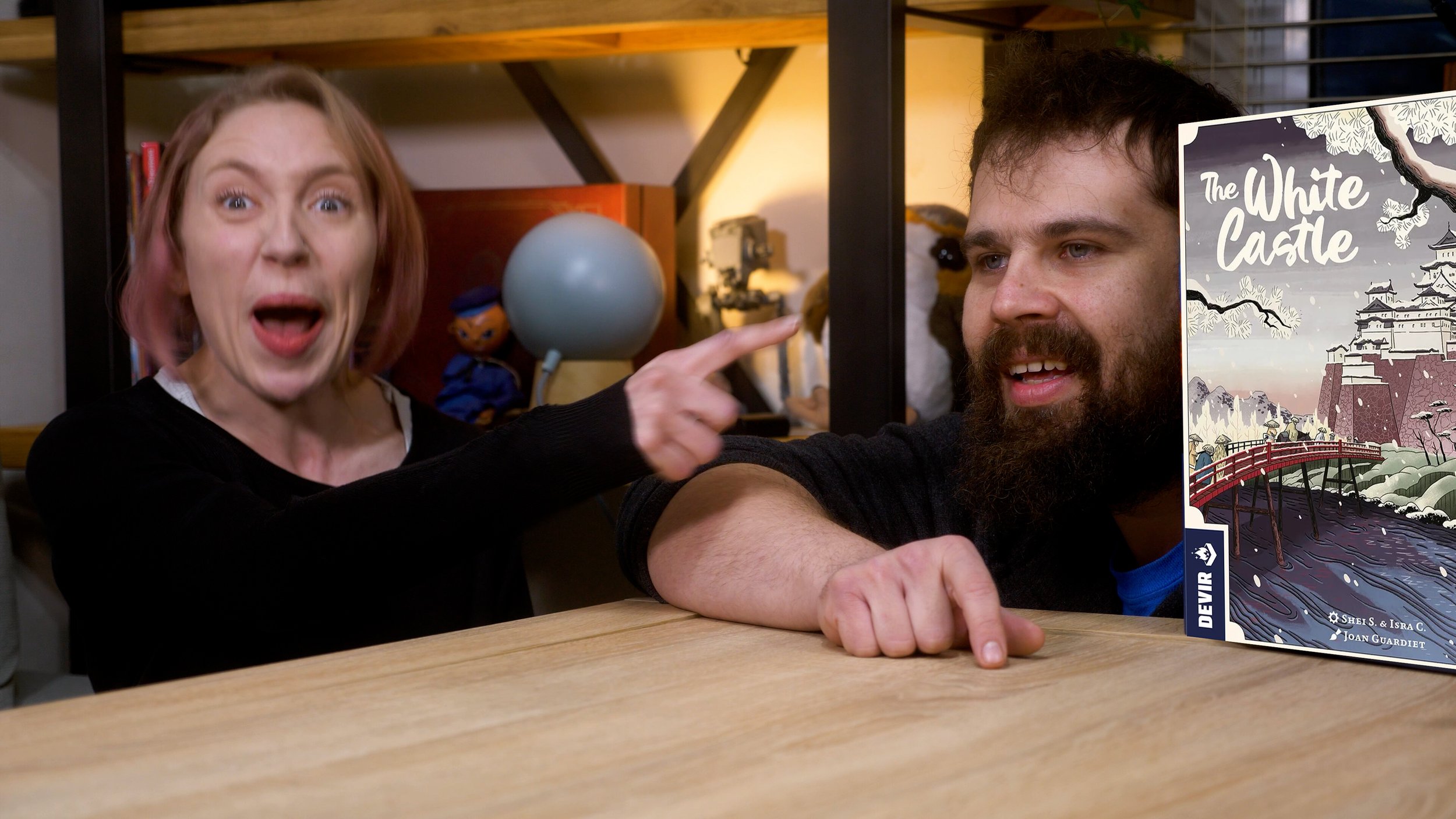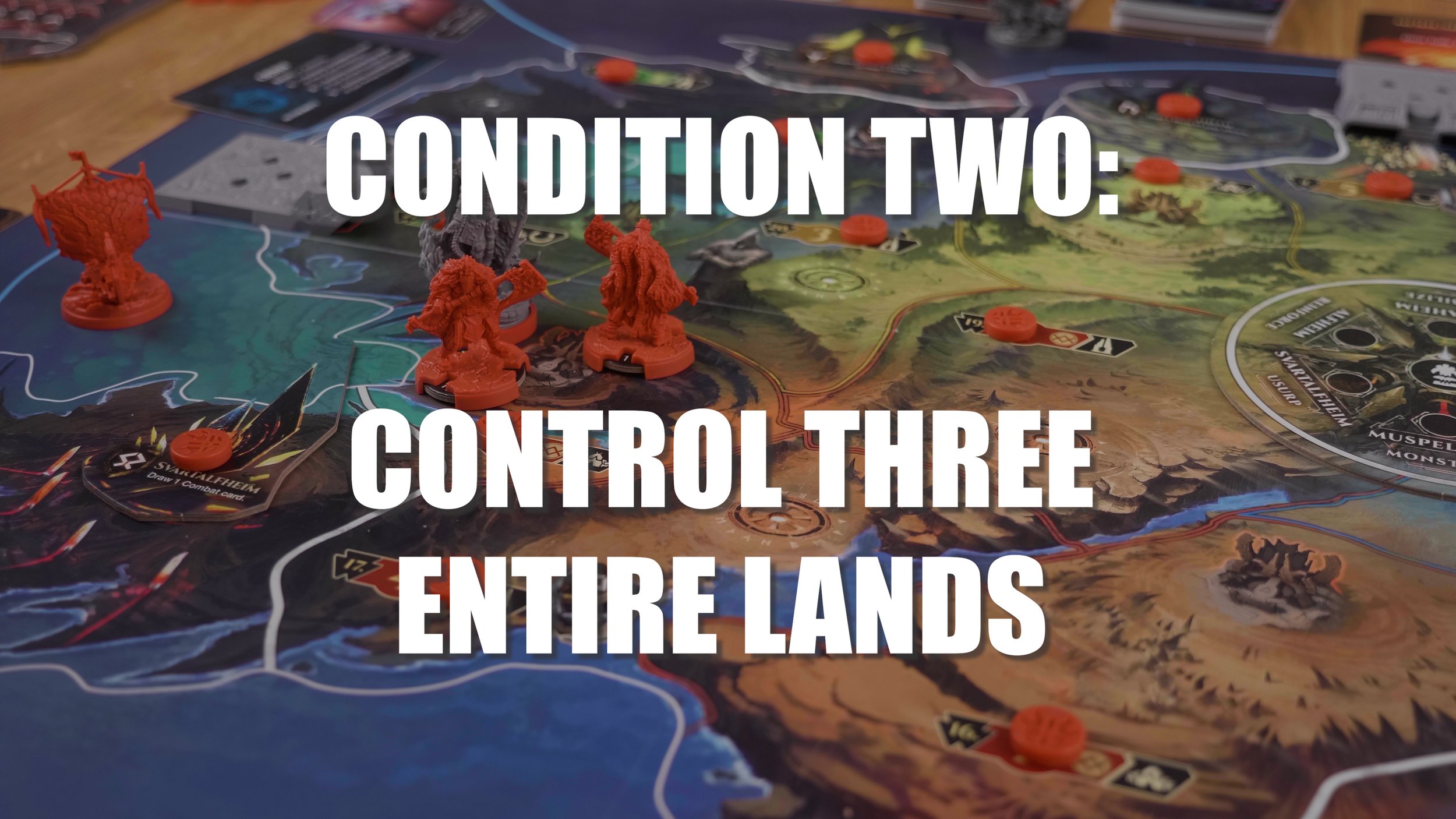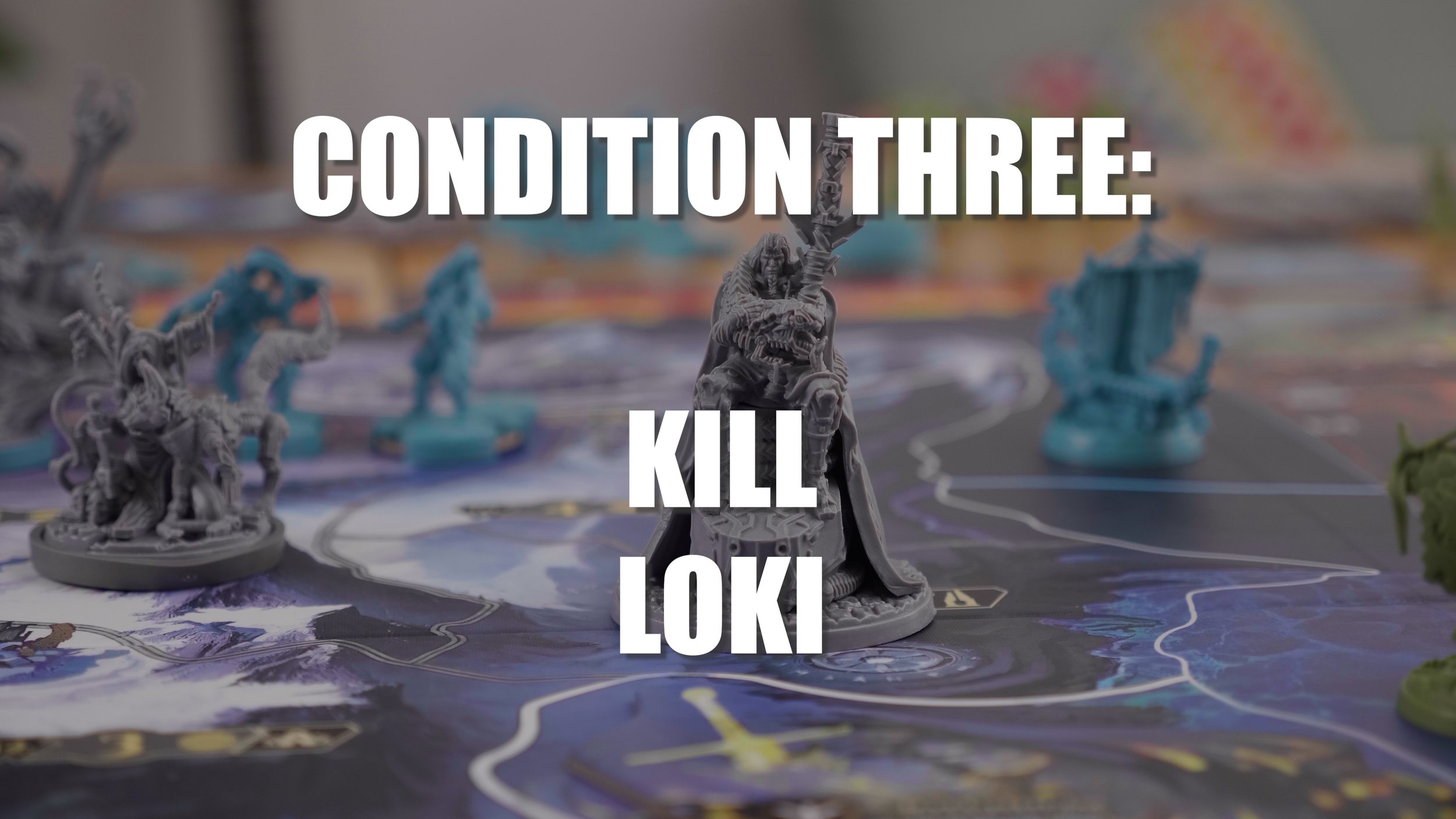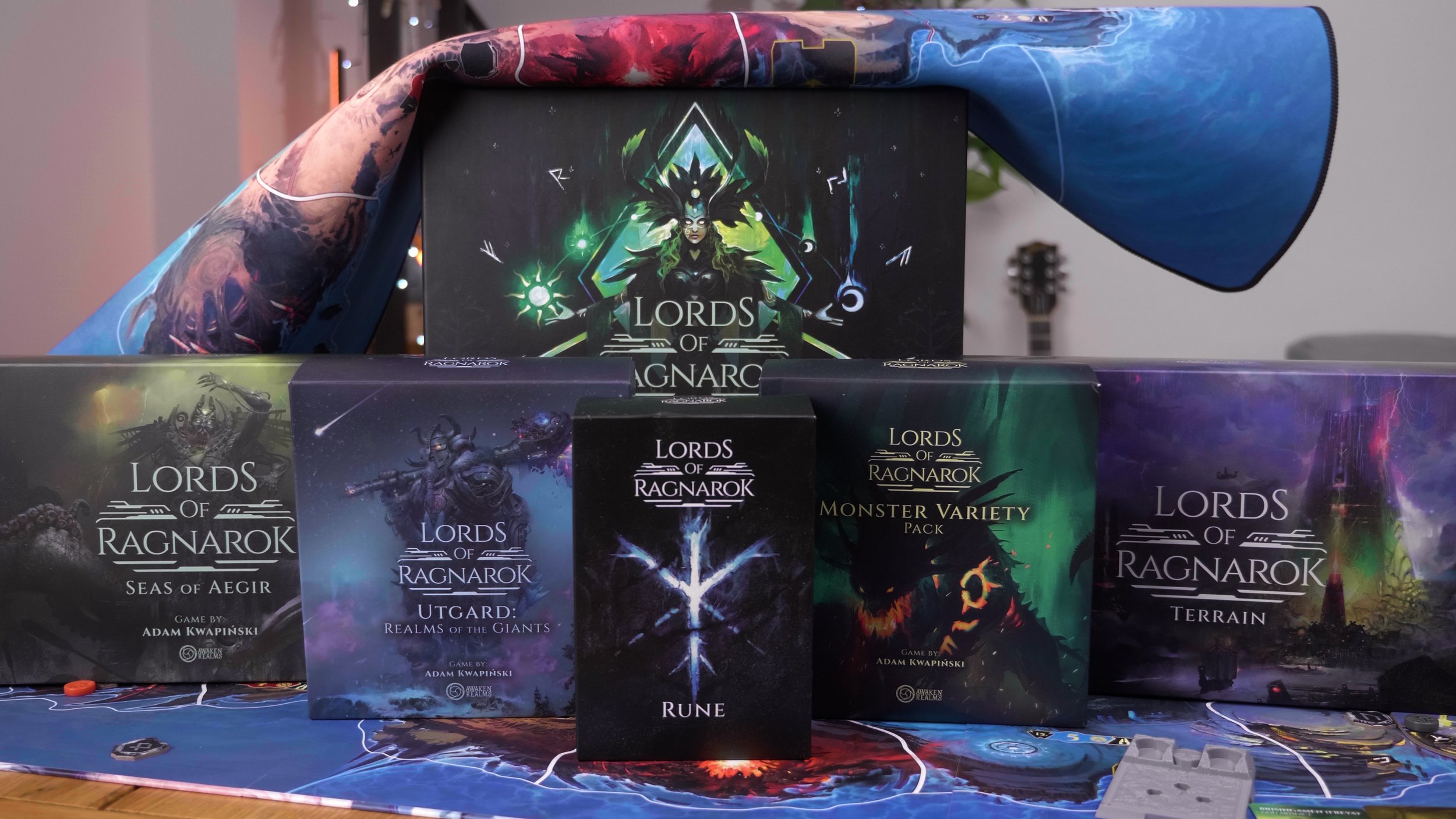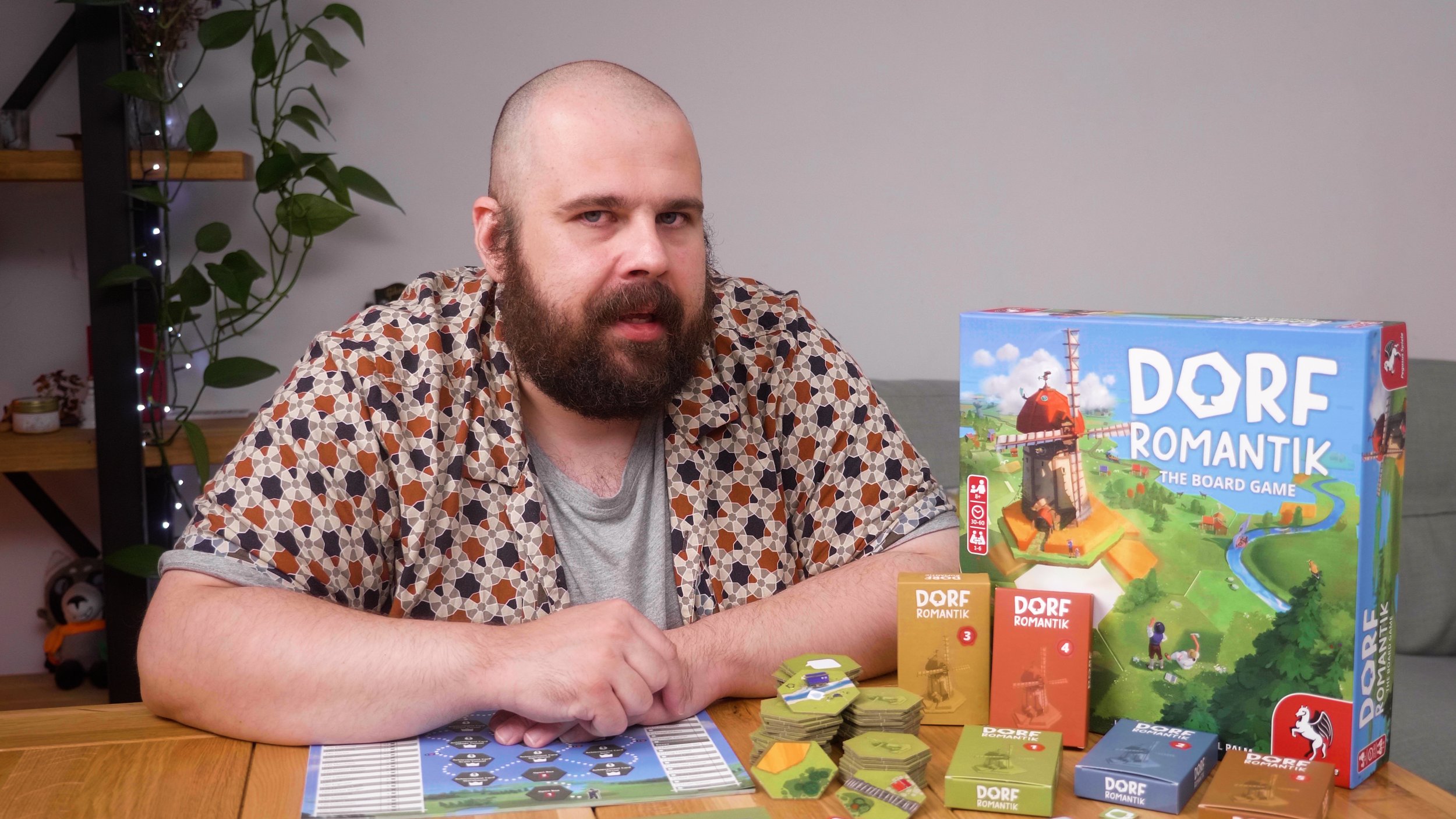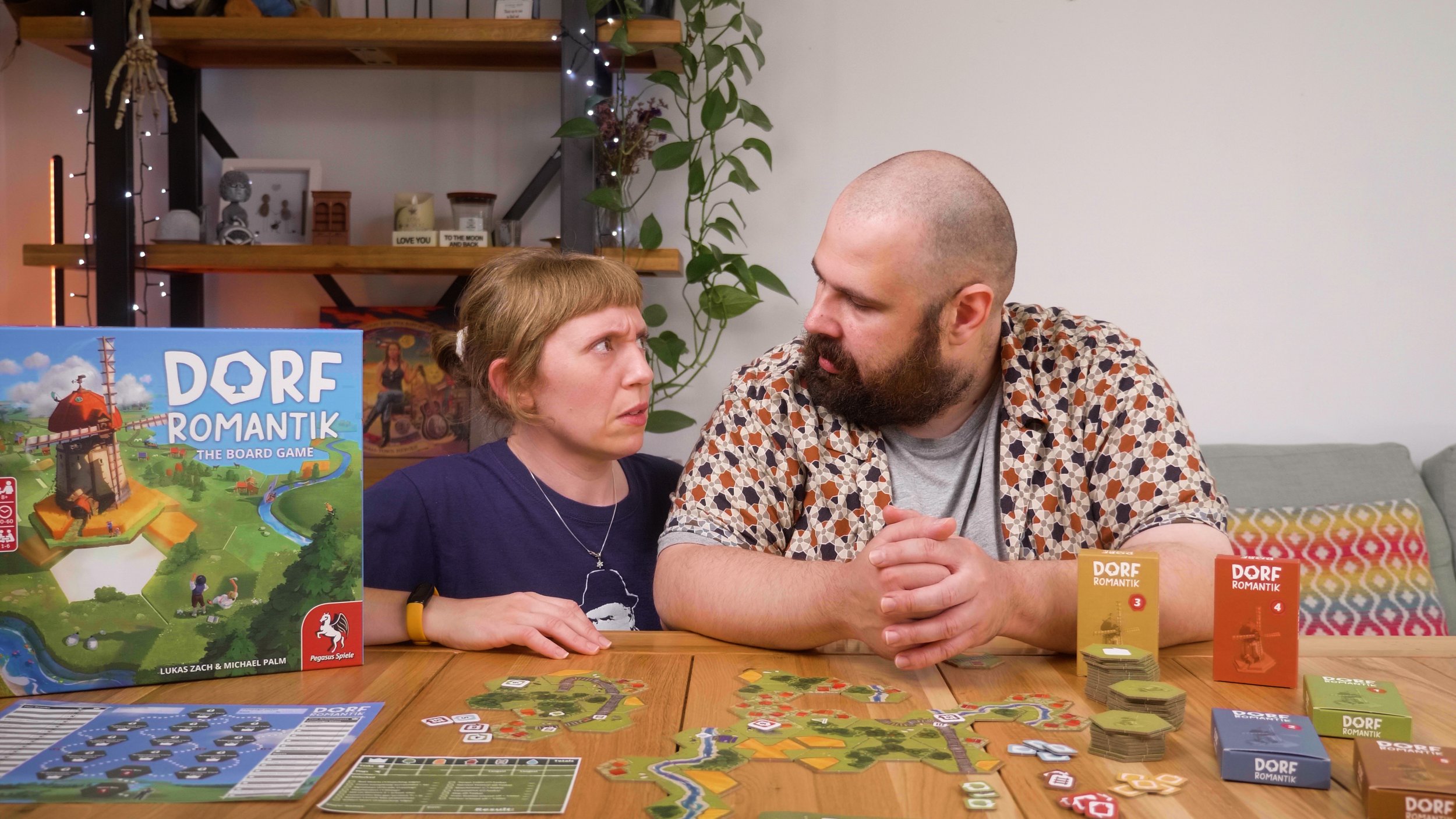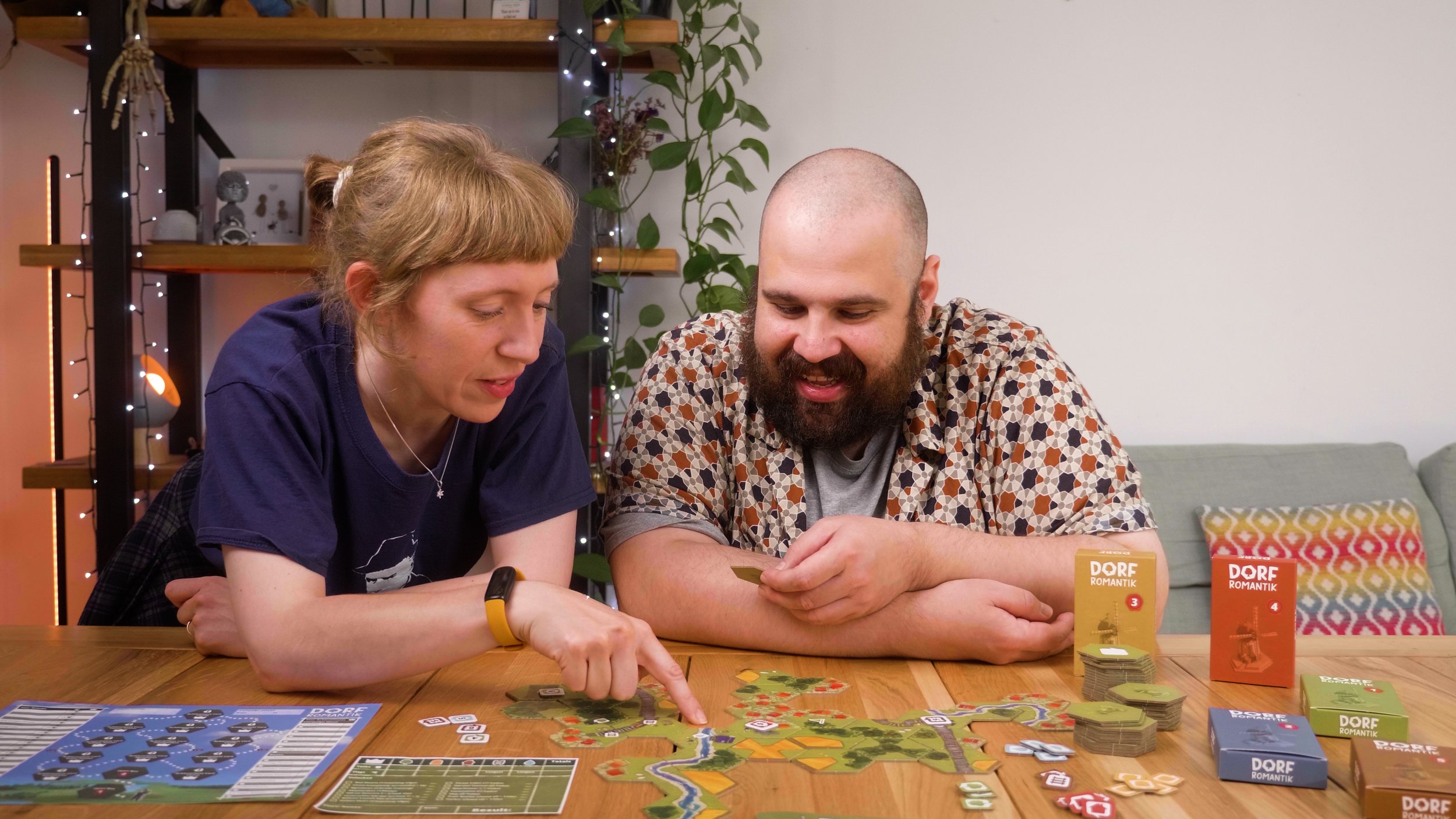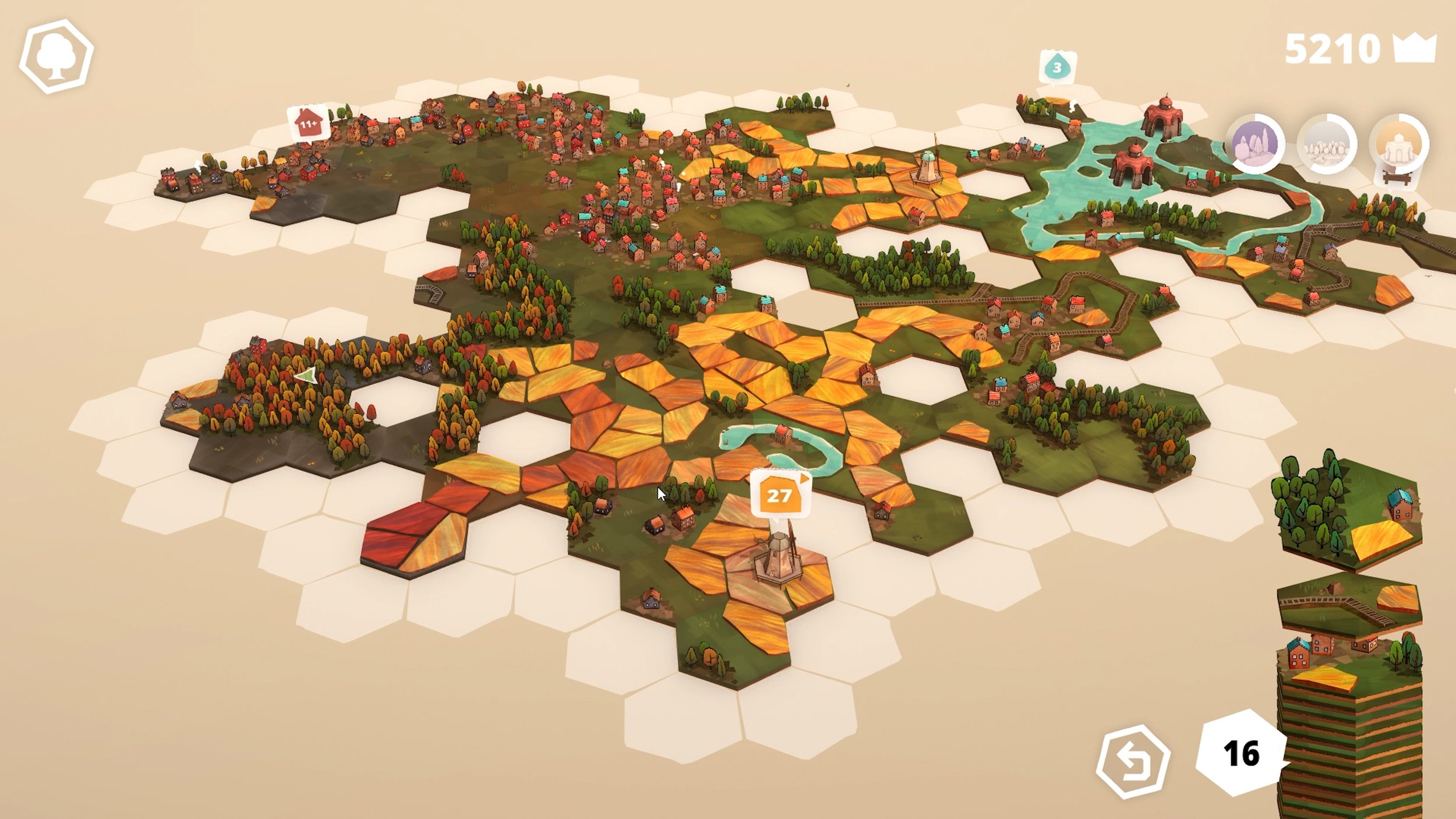Amongst Many Board Games, The White Castle is a Board Game
There’s something to be said about how much The White Castle achieves with so little space and so little cost. Here’s a game that takes up three times less space than a shoebox and, depending on your board game preferences, might last longer than a pair of wellies.
But with utility comes a cost, so let’s take a look at where The White Castle excels, and where it accidentally trims the good bits.
Below, is a transcript of the video.
Efka: Have we got an exciting board game to talk about today
Elaine: Oh, cool, finally a review of Voidfall!
Efka: No, no, no, we can't do Voidfall yet, that review needs a bit more work in the oven so we have to push it back. Again.
Elaine: No! We can’t do that. All day long at Essen Spiel people were coming up to me saying “Why don’t you review euro games anymore Efka?” “Do you hate Eurogames Efka?” “Give me eurogames Efka.”
Efka: Why were they calling you Efka?
Elaine: Because, Efka, we live in a patriarchy.
Efka: That checks out.
Efka: Anyway, today’s game is a euro game, it’s called The White Castle, I don’t want any burger jokes, no Harold and Kumar references, just clean euro game fun.
Elaine: Heeey! White Castle, put it in a square bun!
In The White Castle, 1-4 players navigate through complex internal politics of Feudal Japan, wheedling their way to bribe their lackeys into influential positions of power in court, military and... gardening?
If that sounded a little weird, but exciting!, then immediately erase all of what I said from your brain because what you actually do in this game is take a dice, place it on an action, get some resources, convert some resources, potentially trigger some bonus actions, get some more resources to set yourself up for more bonus actions and at the end someone will have more points than others and will win!
Let me show you how it works.
The visual and game centerpiece of White Castle are these three cardboard bridges, and as we all know,
[together] "humans build bridges so we can place dice on them".
Efka: Every round a bunch of dice will be rolled, and then placed on their respective bridges in ascending order.
On your turn, you must take a die from a bridge and place it on an action, but you can only take dice that are hanging on the sides of the bridges, the lowest and highest values of a given color. If I take this die here, I just place it on an action. But it wouldn’t be a Eurogame if it didn’t have an
[together] "innovative action selection mechanism".
The dice placement spots that let you do actions have values. If you place a die that depicts a higher value, you get money equal to the difference. If you place a die of lower value, you have to pay the difference.
So if you take a die from this side, nothing happens, but it’ likely be a high value dice. Whereas if you take a die from this side, it will probably be low, but [together sing] things start poppin’, like Gandalf’s fireworks on Bilbo’s birthday at the beginning of Peter Jackson’s Lord of the Rings part one Fellowship of the Ring [mismatch tones] movie.
[HIGH FIVE]
So, you’ve opted for a low value dice prize, and are wondering what’s behind door number 2?! Drumroll please.
It’s… a LANTERN!
Efka: Can I have door number 3 instead?
Every time you take the die on the left side of the bridge you get a lantern bonus.
At the beginning of the game, this is likely just a resource or maybe a victory point? A smol thing. But, as you play, cards will travel to your personal action area, changing the actions you can do there, but also bumping the card that was there into your lantern zone.
Meaning that as the game progresses, the lantern zone expands, transforming from a frugal parent who will only buy supermarket brand potato waffles because they’re "just as good as Bird’s Eye" to a generous dopamine benefactor that constantly sates your craving for resources by showering you with gifts.
Efka: Actually I changed my mind, can I have door number 2 again?
Elaine: Are you sure?
Efka: Yes, just give me the lantern! But out of curiosity, what was behind door number 3?
Elaine: Super Mario Wonder.
[CRASHING NOISE]
[TECHNICAL DIFFICULTIES]
Efka: I broke the bridge...Elaine: Did you?
Efka: Yeah I did
And that my friends was an accurate depiction of how it feels to play White Castle. You’ll wrack your brain over how and which action to take, and then realise you’ve opened the door for your opponent to do something much more desirable.
Let me explain the actual actions work so everything falls into place.
When you place a die on one of the spaces in the castle, you’ll activate all the action spaces that correspond to the colour of your die. Some spaces sport all three dice colours, meaning you’ll only get to do one of the actions, and some spaces let you double up, which feels very good but those are often contested by other players.
Generally, your big end game points come from the three types of people you deploy onto the board. Courtiers will score based on how high they are in the castle, but first, you need to deploy them to the castle gates for money, and then pay pearls to move them up.
Which is also how you get these cards into your card action slot which then moves them into the lantern bonus area.
Warriors cost steel to place in training camps and won’t score you points by themselves, but each warrior will score points based on how many courtiers you have in the castle.
Gardeners cost food and will score you a fixed number of points based on which garden you place them in but when you place them you get a bonus, and will also get that bonus at the end of every round as long as the bridge next to them still has dice remaining.
So the actions themselves just let you do those things. Maybe get some resources. Ooh nice, I get some steel. Or maybe place one of your pieces. Ooh, I can spend that steel to place a warrior in the training camp. That'll trigger a bonus which will let me place a courtier, except I don’t have enough pearls to move them up oh no I didn’t plan well.
And let’s talk about the elephant in the room, I know you’ve all been thinking to yourselves – what’s up with all these big birds at the top? That is the stork track. If you take the stork action, you move up on the stork track, and whoever is higher on the stork track is the first player. And then at the end of the game, the stork will bring you a baby! And by baby I mean more victory points.
[Elaine] Sounds a lot like Pipeline.
[Efka] This game is nothing like pipeline! Pipeline is a big sprawling strategy economy game. White Castle is a minimalist dry euro.
[Elaine] I just mean this track, it’s a bit like Pipeline, in whoever is highest is first.
[Efka] …And that’s why you thought you would compare it to the greatness, to No Pun Included’s 2019 Game of the Year - Pipeline? Shame on you Elaine, I expected better from you.
Do you know what this game reminds me of? Pipeline. On the outset, they’re incredibly different, but when you boil it down to how they feel…
The one thing we didn’t mention yet, and frankly it warps everything we’ve described about this game so far, is that each player only gets nine actions. Three rounds, three actions each. That’s it.
With these nine actions, you not only want to empty out this yard of fifteen layabouts but also somehow acquire the resources to pay for all of that.
Which is very reminiscent of Pipeline’s restricted number of turns. If you want more comparisons, both games have small actions that you need to set up to trigger a bunch of bonuses to make them effective, both games never give you enough resources, both games feel incredibly opportunistic!
For example, in White Castle, you might take some food and think to yourself, "Oh, cool, next turn I’ll place a gardener". But then by the time your turn comes back round to you, not only is the die gone that you needed to take the action, but also the action itself is gone because someone sent a courtier to that space and stole the action for themselves and replaced it with something entirely different.
White Castle is dynamic and unpredictable, meaning you can’t much plan your turns in advance, like in Pipeline, and have to adapt to the changing gamestate, like in Pipeline, and this dynamic shifting leads to wildly diverging scores where one game you could score seventy points, and then the game afterwards you could score like only twenty five, LIKE IN PIPELINE! Except in Pipeline scores can go up over a thousand sometimes but basically IT’S PIPELINE !
Thank you Efka, for proving my point *hides words behind cough* about the patriarchy.
But whilst we’re comparing White Castle to Pipeline, I can’t help but think, it’s just not Pipeline.
Listen, I have a lot of time for what publisher Devir and designers Isra C. and Shei S. are doing here.
Small box, cheap price, incredibly sleek and clever mechanisms – little game with a lot of punch and crunchy decisions. That’s super.
But it also reminds me of a supermarket brand potato waffle. Cheap, effective, precision manufactured. But it just hasn't got that waffly versatile flavour of Bird’s Eye.
When you play a big strategy euro game, let’s pick a random one like Pipeline, you often get a sense of a narrative scope of what you’re doing. I don’t mean, like a story, but just a sense of your strategy translating to a narrative. I’ve built up an efficient oil refining system which let me corner the market via sales. I’ve leveraged early game loans and technology upgrades into a big payout at the end. That sort of stuff.
The narrative scope of White Castle is that – this game I placed these pieces, instead of these ones. And that’s maybe a petty complaint when this game is twice as elegant and half the price, but whilst we're on complaints – here’s a few more.
Because of this shifting dynamic nature and difficulty of planning, the brisk nine turns take ever such a long time. You can’t plan your turn in advance, and then by the time the turn comes to you, you just hunker down, as you try to evaluate a sea of homogenous-looking action that are now different since the last time you looked at them. What you end up with is a fairly heads down, silent, experience that takes too long for what it delivers.
That’s not to say that there isn’t room for White Castle in your collection. At two players it’s a little less interactive but much pacier, although if you recall our last video, a great two player game needs to be an ice-breaker, and this is at best an ice-maintainer.
Which of course leads to this being a pretty great solo experience. Scores being dynamic lends itself well to a “beat the high-score” experience, and much like the rest of it, the bot is sleek, elegant and doesn’t get in the way. Also, it’s brutal. I played it on easy, and the bot got scores I’ve never seen a human player achieve, so if you’re a glutton for punishment, go to White Castle. Also, get this game.
Elaine: I thought you said “no white castle jokes?”
Efka: yeah but, gotta do a callback to the beginning of the video
Elaine: Do you wanna do a Harold and Kumar reference?
Efka: I’ve never actually seen that film.
Elaine: Neither have I.
Efka: Eh, it's old and probably not ok in some way.
Elaine: How about we sing the song again?
[Both try to harmonize but it’s mismatched and doesn’t work]
Efka: You know what, why don’t instead say that White Castle is ok, good even, but what it shaves on cost it also shaves on experience.
Elaine: I'm gonna go and check on Voidfall in the oven
Efka: Okay...
Might be a while before she comes back. So if you don't want to wait why don't you hit the subscribe button?
and that way the video will just appear on your YouTube page.
And if you've already done that, check out our board game podcast "Talk Cardboard".
Where we also talk about board games every other Monday.
Last episode, we discussed all the games we played at Essen Spiel.
And then every other, other Monday we have these No Pun Included videos.
And if you've done all of these things, you must be a fan! So why not support us on Patreon? patreon.com/nopunincluded.
That's where you give us a bit of money every month and in return you get bonus episodes of the podcast and you also support independent board game media, so that's very nice.
See you on Monday!




